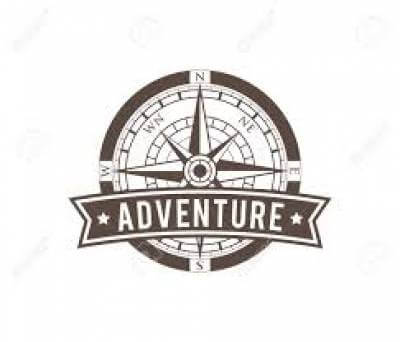UPPER MUSTANG TREK
This Upper Mustang 16 day trek will take you to the Kingdom of Lo Manthang– a place rich in history and Tibetan culture only opened to trekking in 1992. This is also Nepal’s equivalent of the American Wild West, an isolated, rugged harsh region on the Tibetan border where it takes a special kind of people to survive. This region has preserved its culture and is where most people speak Tibetan dialects. On this trek, you will explore many hidden valleys wedged between Tibet and the Himalayas. The walled city of Lo-Manthang (3840m) used to be a part of the Tibetan Kingdom of Gungthang until the 1830s. This remote and harsh landscape is different than anything seen elsewhere in Nepal. This is a strange landscape that will make you feel you have stepped back in time.
A highlight of the trek is a visit to several recently restored monasteries and also the innocent and playful smiles of the shaved-headed children in their distinct maroon colored robes studying ancient Tibetan Buddhism. Lo-Manthang has four castes, 275 houses, the royal castle, blacksmiths, butchers and millers. The sky burial practice (funeral practice where the body is placed on a mountain top and exposed to carrion eaters – especially birds), and polyandry (woman has more than one husband) are still practiced in the Upper Mustang region.
This is a truly unique and unspoiled region of Nepal. Sherpa Teams will take care of all the details, such as permits, making it a hassle-free journey of discovery. Sherpa Teams have over 40 years in the trekking and climbing business in Nepal. They have an excellent reputation among travelers and within the trekking industry in Nepal.
ITINERARY
Day 1 : Arrive at Kathmandu and transfer to hotel.
Sherpa Teams staff will be there to greet you at Tribhuvan International Airport and take you to your hotel, followed by a briefing covering information and details of your trek. We will also answer any questions you have concerning the trek. Your safety and comfort are paramount.
Day 2 : Drive to Pokhara (8,50m) Duration: 6-7 hours.
Our journey begins with a 6-7 hour drive from Kathmandu to Pokhara Valley and its beautiful Phewa Tal (lake) and then checking in to your hotel - close to Phewa Tal. There is plenty to see and do along Lakeside with its many shops, bars and restaurants to choose from. You may also enjoy a boat ride on the lake.
Day 3 : From Pokhara fly to Jomson (2700m) & Trek to Kagbeni (2800m) Duration: 3 hours.
Today we fly from Pokhara to Jomson – a 20 – 25-minute flight scenic flight with views of the famous Kali Gandaki Gorge (world’s deepest), along with views of several colossal peaks” Mt. Dhaulagiri, Annapurna Ranges and Machapuchare (Fishtail). After landing at Jomson we begin our trek heading to Kagbeni, about a 3-4 hour trek. Kagbeni is also the checkpoint where authorities will check your documents before you enter the restricted Upper Mustang region. Along the trail, we will have views of Mt. Dhaulagiri, Nilgiri and Tukuche Peak. We will stay the night at Kagbeni.
Day 4 : Trek from Kagbeni to Chele (3,110m) Duration: 5-6 hours.
Today we head out early in order to avoid the high winds that develop later in the day. In the early morning light we can see Nilgiri that has an orange glow due to the sun’s reflection on it. We follow the east bank of the Kali Gandaki River until we enter the wide Chhusang Valley. After leaving Kagbeni we ascend giving us spectacular views of the village and Mt Nilgiri (7061m).The trail then heads east towards the more arid rugged and barren land common to the Mustang region. We soon reach the village of Tangbe with its red and whitewashed houses situated on the opposite banks of the river, and from here there are superb views over the Kali Gandaki River. High up the cliffs above the village are caves thought to have been home to the early inhabitants of this area. The trail then comes to Chele where we have views of the Himalayan Ranges. Tonight we will stay at Chele.
Day 5 : Trek from Chele to Geling (3,500m) Duration: 5-6 hours.
Today we will cross the rocky hills and eventually come to a stone cairn at 3540m at which point we descend to the small village of Samar with its chortens, stupa (religious– monuments), and other Buddhist structures. After leaving Samar we head down into a large canyon and then once again ascend to a 3800m ridge before again descending to the remote Shyangmochen Village and then head to Geling Village where we will stay the night.
Day 6 : Geling to Charang (3,570m) Duration: 5-6 hours.
From Geling we head up to Nyi La Pass (3932m) and then descend and follow the Tangmar Chu River past Mani stone walls (stones inscribed with Lamaist prayers). We then follow the trail to Charang Village with its huge five-story Dzong (monastery) and red Gompa (a type of monastery) and Thankas (forms of art).
Day 7 : Charang to Lo - Manthang (3840m) Duration: 5-6 hours.
Today the trail is mostly uphill as we first head to Lo-Gekar - home to one of the oldest Tibetan monasteries in the world. Lo-Gekar Gompa is older than the well known Samye Gompa in Tibet. After visiting Lo Gekar we travel by horse to Lo-Manthang. The trail takes us past the ancient walled city of Lo-Manthang before descending to cross a stream before reaching Lo-Manthang.
Day 8 : Lo Manthang to Namgyal Gompa and Tingkhar (3810m) & return; Duration: 5-6 hours.
Today we climb to Namgyal Gompa located at the top of a peak and then proceed to Tingkhar situated north-west of Lo Manthang. It is a small village consisting of about 40 houses.
Day 9 : Lo-Manthang to Drakmar (3820m) Duration: 6-7 hours.
Today the trail takes us up an altitude of 4070m and then heads to the Chogo La Pass (4320m), the highest point on our trek. We will then head downhill and cross the Charang River and make our way to Lo Gekar, passing the village of Ghar Gompa (3839m) with its Tibetan religious structures. After passing Ghar Gompa we follow the trail down to Drakmar.
Day 10 : Drakmar to Shyangmochen (3800) Duration: 5-6 hours.
Today we descend and pass the stone walls and fields of Drakmar before heading down again until we reach Ghami (3475m), then Jaite (3820m) and finally Chhung-Kah. From here we continue to Tama Gaon (3710m) and further downhill to Shyangmochen.
Day 11 : Shyangmochen to Chhusang (2980m) Duration: 5-6 hours.
Our trail today follows a river to Chhusang, or an alternative route is to head to Samar and visit the Ranchung Caves. This route adds another 30 minutes to the trek.
Day 12 : Chhusang to Muktinath (3,800m) Duration: 7-8 hours.
Today we head out on the trail that leads to Chhusang Village and then heads up to the valley above where we can see Muktinath in the distance. We then continue through the valley, descending and crossing the river via a suspension bridge. This area is well known for fossils found in the Gandaki River (Shaligrams – black holy stones). As we continue along the trail we have breathtaking views of Annapurna, Dhaulagiri and Tukuche Himalayan ranges.
Day 13 : Muktinath to Jomson (2750m) Via Kagbeni; Duration: 5-6 hours.
After leaving Muktinath we pass through lush meadows, fruit trees, and streams, passing through Kagbeni before we reach Jomson situated in the Kali Gandaki Valley. Today we will take a short detour to Bon Punt Monastery in Lubra. Bon-Po has just 14 families and is one of the few Bonpo villages in Nepal. Bon Po is said to be older than traditional Buddhism. We will finally arrive at Kagbeni which has a well-deserved reputation for its horticulture industry –, especially apple orchards.
Day 14 : Fly from Jomson to Pokhara (820M) & drive to accommodation; Duration: 30 minutes.
Today we will head to the small airport terminal at Jomson where we take a short 15 to 20-minute flight to Pokhara. Once airborne you will have some incredible views of the Himalayas. This evening you can sit back, relax, and enjoy a drink or two and look back on your amazing adventure through the Annapurna Conservation Area. You can walk along Lakeside or visit the World Peace Pagoda (clearly visible across Phewa Tal, the Bindabasini Temple, the Matepani Buddhist Monastery, the International Mountain Museum or take a ride out to Devi's Falls.
Day 15 : Drive from Pokhara to Kathmandu (1,350m) Duration: 6-7 hours.
Today we head back on a 6 to 7-hour drive to Kathmandu with many warm memories of Nepal and its unique culture and geography.
Day 16 : International departure from Kathmandu Airport.
SherpaTeams staff will transfer you to the airport at least three hours prior to your final departure from Nepal. We hope that this epic trek will be firmly ingrained in your memory and will be enough to prompt you to consider your next trek with us!
SERVICES
Cost Included In Your Package
- International Airport pick-up and drop by car.
- Three meals a day (Breakfast, Lunch, and Dinner/ the main course) during the trek in the mountain.
- Two nights’ standard accommodation in a 3-star hotel in Kathmandu in a twin-sharing basis including 2 breakfasts.
- 2 nights’ standard accommodation in a 3-star hotel in Pokhara in a twin-sharing basis including 2 breakfasts.
- An experienced and Knowledgeable English-speaking Govt. registered trekking guide.
- Strong, helpful Sherpa porters with proper safety equipment and walking equipment, his salary, food, accommodation, and insurance (one porter for two people).
- All Food, Accommodation, Insurance, and transportation for porter and guide.
- Annapurna conservation area permit
- TIMS card (Trekking Information Management System)
- Upper Mustang special permit
- Pokhara to Jomsom and Jomsom to Pokhara flight with airport departure tax
- Use of sleeping bag, down jacket, duffel bag and walking poles (if you don’t have your own, to be returned after trip completed).
- Trekking lodge (Tea House) throughout the trek.
- Assistant guide group size of more than 8 people in a group.
- Transportation from Kathmandu-Pokhara-Kathmandu by Tourist bus.
- Seasonal fresh fruits every day
- Appreciation of certificate after the successful trek
- Sherpa Teams company T-shirt
- Emergency rescue operation assistance in arranging in case of complex health condition (funded by travel insurance)
- All government, Local taxes/ vat and official Expenses
Cost Excludes
- Nepal entry visa fee (easy to obtain the visa on arrival at Tribhuvan International Airport – Kathmandu). $30 USD for 15-day, $50 USD for 30 Days, and $125 USD for 90 Days visa.
- Extra drinks as alcoholic & non-alcoholic such as Fanta, tea, coffee, Coca-cola, sprite, water, beer, etc.
- Additional cost by out of management control due to the landscape, weather condition, illness, change of government policies, strikes, and physical condition, etc.
- Personal expenses such as snacks, laundry, telephone, WIFI, hot shower, etc at tea houses on a trek.
- Travel insurance has to cover emergency rescue evacuation from the high-altitude
- Lunch and Dinner in Kathmandu and Pokhara
- Personal trekking equipment for this trek
- Tipping ( traditional way and expected by guides and staff)
- Any other expenses that are not mentioned in the Price Include section of this trek.
- NOTE: If you return earlier from the trek due to sickness or any problem, the money you paid for the flight, hotel, mountain room, food, etc. is nonrefundable, and you will need to bear the expenses for the hotel, food, etc. in Kathmandu yourself.
EQUIPMENTS
The following information will give you some idea about what you need to bring for the trek. It is important you do not forget the essential items, as this will determine your comfort and safety on the trek. Equally important is that you do not burden yourself with unnecessary equipment on the trek.
- Sleeping Bag (Sherpa Teams will provide but need to return after completing the trip)
- Duffel Bag (Sherpa Teams will provide but need to return after completing the trip)
- Fleece jacket or pullover
- Waterproof windbreaker or windcheater
- Thermal underclothes
- Rain poncho
- Down jacket (Sherpa Teams will provide but need to return after completing the trip)
- Fleece or wool trousers
- Sun hat or scarf
- Trekking pants (two pairs)
- Mittens or woolen gloves
- Hiking socks (several pairs)
- Moisture-wicking shirts, including t-shirts
- Trekking shoes or boots with spare laces
- Flip-flops or sandals for relaxing in the evenings
- Underwear (several pairs)
- Swimsuit or swimming costume
- Sunglasses
- Headlamp or flashlight/torch
- Sleeping bag (Sherpa Teams can provide this for you)
- Trekking poles (if desired)
- Hiking backpack with a capacity of at least 40 liters
- Small lock for your backpack
- Reusable water bottles (at least two liters)
- Water purification tablets or filtration device
- Wash towel
- Basic first aid kit
Toiletries (tissues, toilet paper, moisturizer, lip balm, sunscreen, sanitary pads, hand sanitizer, nail clippers, a small mirror, toothbrush, toothpaste, glasses, contacts, etc.)
GOOD TO KNOW
Accommodation
You will be accommodated in 3-star hotels in Kathmandu. During the trek, we will be staying at lodges/ teahouses. You may find comfort and better quality teahouses - having attached bathroom at lower levels- until you reach higher elevations, where the accommodation is more basic with bare necessities.
Meals during the trek
In Kathmandu, your hotel includes breakfast, whereas all meals (breakfast, lunch, and dinner) will be provided during the trek. A staple food of these regions is potatoes, oats, buckwheat, Sherpa stew and Tibetan bread. Sherpa’s’ started farming potatoes when the first seeds were introduced to the region in the early 90s. There is a limited choice of food at higher elevations and except many potato dishes. Potatoes are high in carbohydrates – an excellent source of energy needed at high altitudes.
Transportation
We use a private car for sightseeing and for the airport to hotel pick and drop off. We use public transportation or local buses during the trek.
Physical fitness
This can be a challenging trek where you often have to walk 6-7 hours a day. You don’t need past experience of hiking or trekking but if you have done any kind of trekking activities then it is always a plus! We have met people from all walks of life, shapes and sizes who have completed the trek. The only difficult part is when altitude sickness strikes and the effect that it can have on your body. Before leaving for Nepal it is good if you can prepare yourself physically by increasing your stamina and oxygen intake.
Remember – The better prepared – the more enjoyable your trek!
MAP
PHOTOS/Videos
Departures
Select a departure month
Fill out the form below and a Travel Expert will reach out to create your perfect tour.
FAQS
What is the Upper Mustang Trek?
The Upper Mustang Trek is a popular trekking route in Nepal that takes you to the remote and restricted region of Upper Mustang. It offers a unique opportunity to explore the ancient Tibetan culture, stunning landscapes, and hidden Buddhist monasteries.
How long does the Upper Mustang Trek take?
The complete Upper Mustang Trek usually takes around 10-18 days. However, the duration can be customized according to your preferences and time availability. The trekking itinerary includes acclimatization days to ensure a safe and enjoyable experience.
Do I need a special permit for the Upper Mustang Trek?
Yes, a special permit called the Upper Mustang Restricted Area Permit is required for the Upper Mustang Trek. This permit is in addition to the Annapurna Conservation Area Permit (ACAP) and the Trekker's Information Management System (TIMS) card.
When is the best time to do the Upper Mustang Trek?
The best time to do the Upper Mustang Trek is during the spring (March to May) and autumn (September to November) seasons. These months offer stable weather, clear skies, and moderate temperatures, making it ideal for trekking. The region experiences a cold desert-like climate, so it is advisable to avoid the monsoon season (June to August) due to heavy rainfall.
What is the difficulty level of the Upper Mustang Trek?
The Upper Mustang Trek is considered a moderate trek. The trail involves gradual ascents and descents, with some steep sections. The altitude can also be a challenge, as you reach up to 3,800 meters. Prior trekking experience and a good level of fitness are recommended.
What is the accommodation like during the trek?
Accommodation during the Upper Mustang Trek is in teahouses or guesthouses along the trail. These provide basic facilities such as a bed, blankets, and shared bathrooms. It is advisable to bring a sleeping bag for extra comfort and warmth. The teahouses also serve meals and snacks, offering a variety of local and international dishes.
Is it possible to do the Upper Mustang Trek independently?
No, the Upper Mustang Trek requires a registered trekking agency and a licensed guide. This is because the region is a restricted area and the special permit can only be obtained through a registered agency. Having a guide ensures your safety, navigation, and adherence to local regulations.
What are the highlights of the Upper Mustang Trek?
The Upper Mustang Trek offers several highlights, including exploring the ancient walled city of Lo Manthang, visiting ancient Buddhist monasteries, witnessing the unique Tibetan-influenced culture and traditions, and enjoying the breathtaking landscapes of the Mustang region.
Is altitude sickness a concern during the trek?
Altitude sickness can be a concern during the Upper Mustang Trek, as you reach high altitudes. It is important to acclimatize properly, stay hydrated, and listen to your body. The trekking itinerary includes gradual ascents and acclimatization days to minimize the risk of altitude sickness. It is advisable to consult with a doctor and prepare accordingly.
Can I combine the Upper Mustang Trek with other treks in the region?
Yes, it is possible to combine the Upper Mustang Trek with other treks in the region, such as the Annapurna Circuit Trek or the Jomsom Muktinath Trek. This allows you to explore more of the Annapurna region and experience different landscapes and cultures.
Are there any cultural considerations or restrictions in Upper Mustang?
Yes, Upper Mustang is a culturally sensitive region with its own set of customs and traditions. It is important to respect the local culture
Latest Traveller’s Reviews
Travel experiences of our clients who recently returned from their trips.
100%
Based On 19 Reviews
Fandy Kwa
United Kingdom
August 29, 2024
Memorable Trek
Our trek in Upper Mustang with Sherpa Expedition was truly memorable. The team’s organization and support made the trek smooth and enjoyable. Our guide was both friendly and highly skilled, offering valuable insights into the region’s culture and environment. The trek was well-managed, with comfortable lodgings and tasty meals provided throughout. The breathtaking landscapes and ancient monasteries of Upper Mustang were a highlight. Sherpa Expedition’s exceptional service and attention to detail ensured a fantastic adventure. I highly recommend their services.
Ewa Tyka
Switzerland
August 8, 2024
Remarkable Trekking Experience
Sherpa Expedition provided a remarkable trekking experience in Upper Mustang. The team was friendly and efficient, making sure every aspect of the trek was well-handled. Our guide was knowledgeable and engaging, adding great value with his insights into the region. The trek was well-paced, with cozy lodgings and good food. The landscapes and ancient monasteries of Upper Mustang were truly breathtaking. Sherpa Expedition’s commitment to excellence ensured a memorable adventure. I would definitely recommend their services for a unique trekking experience.
Patience Lukeri
United States
July 25, 2024
Outstanding Upper Mustang Trek Service
Sherpa Expedition provided outstanding service during our Upper Mustang trek. From the start, their team was professional and attentive, ensuring that every detail was managed efficiently. Our guide was knowledgeable and shared intriguing information about Upper Mustang’s unique culture and terrain. The accommodations were comfortable, and the food was consistently good. The dramatic landscapes and historic sites of Upper Mustang were incredible. Sherpa Expedition’s dedication to delivering a high-quality trekking experience made this journey truly exceptional. Highly recommended!
People Considering This Package Right Now Check availability


























